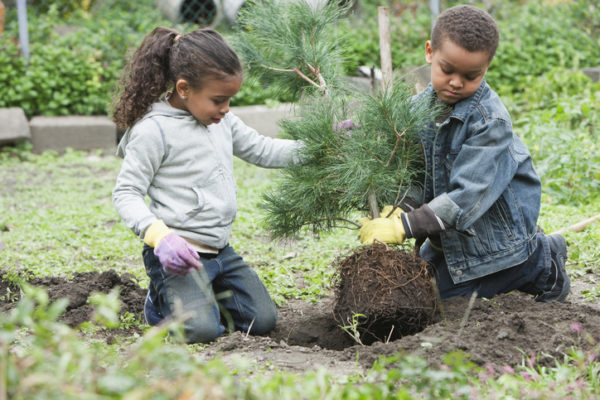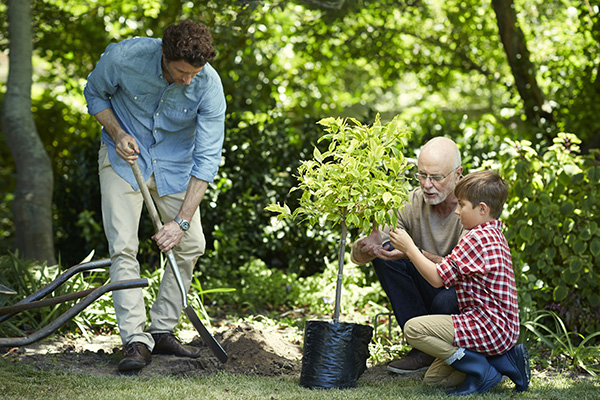When Julius Sterling Morton and his wife moved to an uncultivated plot of land in the barren Nebraska Territory in 1854, they planted trees to make the property feel more like home. Being a nature lover, Morton encouraged others to do the same, thereby sowing the seeds for National Arbor Day, an event now observed every year across the U.S.
“Arbor Day is the perfect time to celebrate all the benefits trees provide for us,” says Danny Cohn, public relations director of the Arbor Day Foundation. With spring being prime planting season—as the trees have time to acclimatize before the heat of the summer—we spoke to Cohn about how to choose and care for a new tree.
The Right Tree For The Right Job
If you’ve never planted a tree before, where do you start? Cohn recommends figuring out what function the tree will serve and going from there.
“Are you planting for shade, beauty, privacy or to attract wildlife?” asks Cohn. “Knowing what your purpose for planting is will help eliminate some concerns and narrow down your species options. If you’re planting for shade and/or to reduce heating and cooling costs, then planting in strategic locations—such as the west and northwest of your house or over along east and west windows—is more ideal.”
For a closer look at what type of tree works best in your local climate, check out the Arbor Day Foundation’s hardiness zone map.
Location, Location, Location

Once the tree is chosen, it’s important to pick a spot where it will flourish. Start by doing a little research to find out how tall and wide the tree will eventually become. The Arbor Day Foundation uses a concept called Right Tree Right Place, based on the tree’s form and function, to help zero in on the best location.
“As the tree grows, the roots will spread, [so] planting too close to sidewalks, homes, swimming pools or other structures can impact the tree, or the tree may damage the structure,” explains Cohn. “[The] same goes when planting under a power line—if it’s a tall species, it will affect power lines and become a safety concern.”
Dig It
Before digging, plan the depth and width of the hole—the new tree’s health depends on it. Think of it as laying a solid foundation.
“Planting a tree too deep will add stress to the roots, resulting in a weak root system,” explains Cohn. “Planting the tree too shallow can leave the root system exposed and may also affect stability.”
To avoid this problem, watch the foundation’s step-by-step video.
Less Is More

Trees don’t need a lot of TLC once they’ve been successfully planted. Depending on the climate and hardiness zone, Cohn suggests watering newly planted trees every seven to 10 days and avoiding fertilizers and potting soils during the first year.
“Despite what the packaging says, the roots are not strong enough to handle the chemicals and other ingredients in such products, and using them on young trees can cause root burn and kill them,” says Cohn.
If the newly planted tree needs a little extra moisture and you don’t want to run the risk of over-watering, place a layer of mulch around the base.
Founder Morton aptly summarized the significance of the annual event saying: “Other holidays repose upon the past; Arbor Day proposes for the future.” And Cohn agrees. “Planting a tree is a perfect way we ensure we continue to enjoy those [the tree’s] benefits for years to come,” he says.
Note: Most states observe Arbor Day in April, typically on the last Friday of the month. However, some states host the event anytime from January to May, depending on their best planting season. The exceptions are South Carolina and Hawaii, which celebrate in December and November, respectively.
Thinking of growing your garden? If your location is prone to extreme weather, our Planting Storm-Safe Trees article will help you choose the most appropriate ones.









Leave a comment